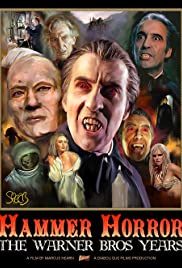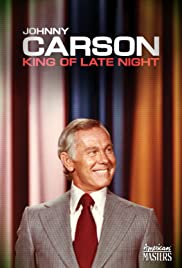
Beginning with Space Invaders in 1978, arcade games began to appear everywhere. By 1982, there were 13,000 dedicated arcade locations across North America. It was the Golden Age of Arcade Games, generating $3.2 billion dollars in 1983. By 1985, revenue had fallen 97%. Atari declared bankruptcy. Arcades closed. Most of the old games were converted or destroyed. A few were packed into warehouses where they remained, largely forgotten, for at least another decade. This is the story of arcade video games, and the generation who grew up in the arcades attempting to collect and preserve their fondest memories.
You May Also Like



Diagnosed with multiple sclerosis, documentarian Matt Embry takes viewers on a transnational journey — from Italy to Canada, and from the lab to the home — in order to examine the politics of the condition.

The untold story of Hammer at Warner Bros, and the relationship that produced some of the British company’s finest films.

Chronological look at the life and career of Johnny Carson (1925-2005), with commentary from an ex-wife and more than 30 fellow comedians, friends, employees, and biographers. The biography defines why Carson was an enduring star (his cool, his timing, his genuine laugh, his breadth of knowledge) and pursues his motivations and inner self (a loner with a drinking problem, a decent Midwesterner whose mother withheld approval, a quiet person who loved to entertain). The key to understanding him, argues the biography, is his love of magic.

In 2001, Andrew Bagby, a medical resident, is murdered not long after breaking up with his girlfriend. Soon after, when she announces she’s pregnant, one of Andrew’s many close friends, Kurt Kuenne, begins this film, a gift to the child.

Maria Bamford is back and subjectively better than ever! Weakness is her brand, so get ready to feel much better about yourself. This Lady Dynamite explodes onstage (after 2 (two) naps with her husband Scott and 2 old, pillowy dogs). Let her be the poor example from which your greatness can be determined.

The final entry in a trilogy of films produced for the U.S. government by John Huston. Some returning combat veterans suffer scars that are more psychological than physical. This film follows patients and staff during their treatment. It deals with what would now be called PTSD, but at the time was categorised as psychoneurosis or shell-shock. Government officials deemed this 1946 film counterproductive to postwar efforts; it was not shown publicly until 1981.

In this sports documentary, Connor Stalions addresses the allegations surrounding the Michigan football sign-stealing scandal for the first time.

In Between Songs follows an Australian Aboriginal family’s struggle to survive. Djalu Gurruwiwi, Yolngu elder, and his sister, Dhanggal, strive to restore eroding tradition. While shepherding their Galpu clan through economic, environmental, and social pressures, they search desperately for new custodians to safeguard their priceless musical legacy. Emmy award winner and Oscar nominated actor/activist James Cromwell narrates this stirring feature documentary.

Documentary on popular exploitation sub genre, sexploitation.

A documentary short detailing the life of Italians living on the Po River in the 1940s.